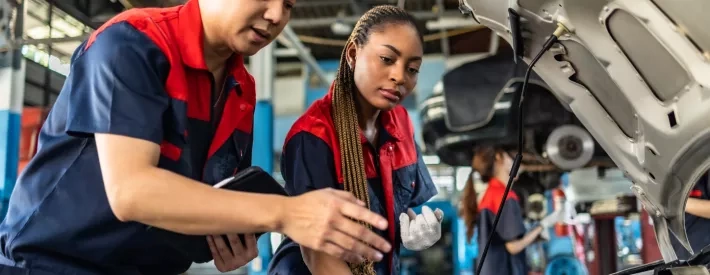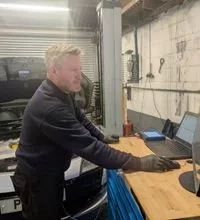Understanding timing (and keeping on top of your skills)

Automotive never stops evolving and there’s always another innovation on the horizon. One that’s catching the attention of car enthusiasts and professionals alike is the wet belt, and not always for positive reasons. But what exactly is a wet belt, and why should you care about it?
A wet belt, simply put, is a type of timing belt that operates in the engine's oil system, meaning it's constantly lubricated by the engine oil. This is in contrast to the traditional dry belt, which runs outside the oil environment and lacks this continuous lubrication.
Why the new technology? Wet belts have a few advantages:
- Enhanced durability: the lubrication provided by the engine oil are intended to ensure the wet belts experience less friction, resulting in a longer lifespan.
- Noise reduction: the oil not only lubricates but also helps dampen the noise typically generated by the belt's operation, leading to a quieter engine.
- Improved efficiency: with reduced friction and smoother operation, engines using wet belts can run more efficiently.
Keeping them smooth
Wet belts are not maintenance-free. Regular servicing is crucial to ensure they remain in optimal condition. Here’s why:
- Preventive maintenance: regular checks can help spot potential issues before they become major problems. This includes ensuring the oil is clean and free from contaminants that could damage the belt
- Longevity: keeping up with maintenance can significantly extend the life of a wet belt, preventing costly repairs or replacements down the line
- Performance: a well-maintained wet belt contributes to the overall performance of a vehicle, ensuring smooth and efficient operation
Stay tech-savvy
For automotive professionals, staying updated with the latest advancements, like the introduction of wet belts, is crucial. Continuous professional development ensures that you’re equipped with the latest knowledge and skills to handle whatever vehicle comes into the workshop effectively.
And while workshops can be incredibly busy, it’s important to set aside time to stay on top of your skills.
Keeping up with CPD ensures that professionals can competently handle new technologies and provide the best service. While understanding new systems and technologies can help prevent mistakes that could lead to safety issues. And finally customers are more likely to trust and return to professionals who are knowledgeable and up to date with the latest automotive advancements.
Timing belts are just one technology that’s evolving but represents a significant advancement in automotive technology, offering numerous benefits such as enhanced durability and noise reduction. However, their performance and longevity hinge on regular maintenance and proper servicing.
Technologies constantly change so it’s crucial everyone stays up to date with the latest innovations, this time it could be a vehicle with a wet belt coming in for work, tomorrow it may be something completely different.
Head to the IMI’s learning resources to find out how it can help you stay up to date.




